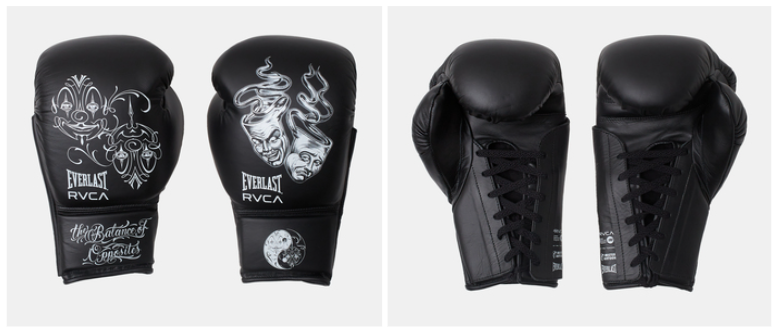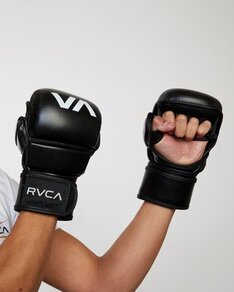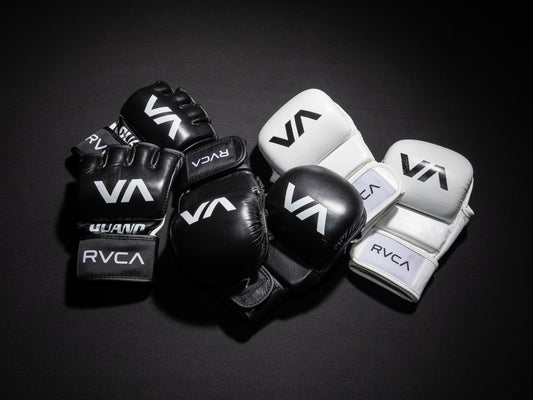Combat sports are respected for their speed and high impact, but athlete safety is a top priority. For mixed martial arts (MMA) and boxing, gloves maintain a level of protection for both fighters and their opponents. Gloved fists not only protect those receiving impact – they also protect the hands of those delivering it.
The rules of boxing and MMA vary greatly, so the needs and design of gloves for these respective disciplines also vary. Here’s how to choose the right MMA gloves for your fight style.
MMA Gloves
MMA combines grappling and jiu jitsu, kickboxing, karate, and other martial arts disciplines. While hands need to be protected from the impact of punches, they must also be free to grab ahold of an opponent or for self protection. To allow for this dexterity, MMA fighting gloves are thinner and leave the fingers exposed – they primarily protect the knuckles and back of the hand while allowing for the ability to grip and grab. With MMA boxing gloves, fighters can have the versatility of throwing strikes and locking on submissions.
Mixed martial arts gloves need to protect without providing a false sense of security. These gloves safeguard the hands, but their stiff nature doesn’t always prevent cuts and scrapes.

Boxing Gloves
Boxing gloves are larger than mixed martial arts gloves – they cover the whole hand, provide wrist support, and have more padding. Grappling, holds, and submissions are not allowed in boxing, so these gloves are designed more so to protect both striker and receiver from punches. The nature of their padding and wrist support encourage longer, overhand strikes with a more traditional technique.
Boxing matches are longer than MMA fights, so the padding in these gloves reduces cuts and softens impacts over longer periods.
Key Differences Between MMA Gloves and Boxing Gloves
Size and Padding
Boxing gloves are bulkier than MMA fight gloves because they have significantly more padding. Generally speaking, the larger the glove, the more padding it contains. MMA gloves are sleeker and have less padding – they protect the hands and knuckles when striking but offer minimal wrist support.
Finger Mobility and Grip
Boxing gloves offer little finger mobility and virtually no grip because the rules of a boxing match don’t require such features. MMA incorporates submissions, grapples, and overhand strikes that do require those features. So, MMA gloves expose the fingers while protecting the knuckles and the back of the hands.
Impact on Punching Power
With more padding, the belief is that boxing gloves generally will deliver less punching power. However, there is some debate in fighting circles that the padding simply minimizes cuts and scrapes, allowing fighters to continue fighting. MMA fighting gloves deliver more power with their stiff materials and thinner padding, but regardless of the glove, true punching power comes from agility and technique.

Is there a difference between bag gloves vs. sparring gloves?
Yes, bag gloves are thinner and lighter than sparring gloves. They condition the hands and develop muscle memory for proper striking technique, whereas an overly padded glove won’t allow you to fully feel if you are punching too softly or incorrectly. Sparring gloves resemble fight gloves with more padding – they’re designed to protect the opponent first.
Defensive Capabilities
Boxing and MMA fighting gloves each carry their respective defensive capabilities. For a boxer, a large padded glove can protect the head and face from opposing strikes – even if a fighter is struck by his own glove, there is significant padding to soften the blow.
For the mixed martial artist, defense isn’t just about protecting from strikes. MMA gloves will protect the backs of hands from strikes, but the hands' open dexterity provides the most significant defense. Fighters can counter-grapple, push themselves up from an under position, and use their open hands to counter their opponent’s strikes.
Effect on Injury Prevention
Not only do boxing gloves protect both fighters from blows and cuts, they also provide wrist support that encourages a punching style that protects the striker’s entire arm. Martial arts gloves protect the backs of hands and knuckles yet allow a more free striking style that prevents injury through a fighter’s ability to defend themselves.
Pros and Cons of MMA Gloves
Advantages
- Manual dexterity with fingers and wrist moving more freely to grapple and strike.
- Provides feedback to the fighter on the purity of their technique because of lighter padding.
- Localized Impact with punches delivered with more power, yet less impact elsewhere.
Disadvantages
- Stiffer padding is more likely to cause abrasions.
- Fingers are more exposed and susceptible to injury during striking (though hand wraps can help).
Pros and Cons of Boxing Gloves

Advantages
- Minimized impact to hands over longer fights due to heavier padding.
- Less abrasions because of smoother materials.
- Pure striking style because of wrist support.
Disadvantages
- Lack of dexterity and digit movement doesn’t allow for grip.
- Heavy padding isn’t ideal for conditioning the hands during training.
Choosing the Right Gloves for Your Sport
Choosing the right gloves is more than just selecting a boxing glove as a boxer and MMA gloves as a mixed martial artist. Your fighting style determines the level of padding or freedom of movement you need. The choice of soft leathers or flexible synthetic materials can also provide flexibility in the wrists that allows for strong defenses and grappling.
Gloves for bag work, training, and sparring are all vital in developing muscle memory and feedback that leads to proper technique – and proper technique is key in increasing power and avoiding injury.
In both boxing and mixed martial arts, the right equipment and gear are an extension of the fighter. The features and range of options in your fighting gloves are as unique as the discipline and fighting style you’re working to develop.


















